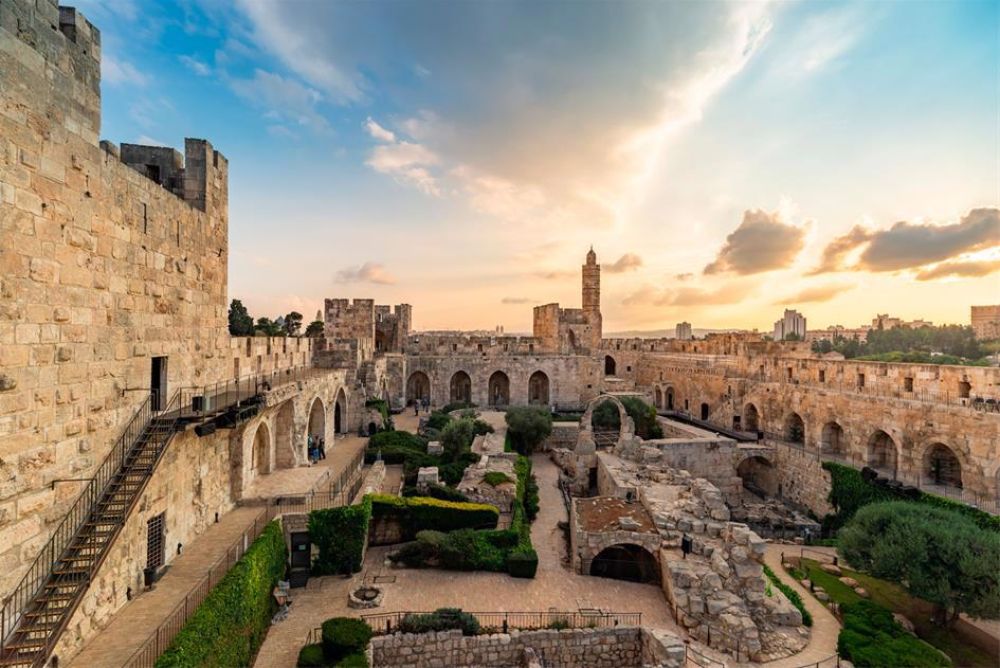

The Tower of David, often referred to as the Jerusalem Citadel, stands as a landmark of historical and cultural significance within the old city walls of Jerusalem. The citadel's roots trace back to the Hellenistic period, but it has been rebuilt and repurposed numerous times throughout the centuries by the various conquerors of Jerusalem, including the Christian Crusaders and Muslim Mamluks. Its name, "Tower of David," is a misnomer from the Byzantine period, as the complex actually has no historical connection to King David.
History of Tourism at the Jerusalem Citadel
Tourism at the Tower of David has been chronicled since the medieval period when Christian pilgrims flocked to the Holy Land. The citadel was often depicted in travel sketches and manuscripts, showcasing its significance even back then. With the advent of the modern era, particularly in the 19th century, travel to the Land of Israel became increasingly popular among pilgrims, scholars, and the curious alike, further cementing the Tower of David as a must-see destination.
In the 20th century, following the establishment of the State of Israel in 1948, infrastructure improvements and the stabilization of the region led to a significant increase in tourism. The Tower of David became an essential stop on the itineraries of those touring the historical and religious sites of Jerusalem.
In the latter part of the 20th century, the Jerusalem Foundation initiated a project to conserve and revitalize the Tower of David, allowing for a better tourist experience. The museum within the citadel was opened in 1989, presenting comprehensive exhibits that illustrate the long and diverse history of Jerusalem. The museum quickly became a focal point for cultural events, educational programs, and a more in-depth exploration of Jerusalem's past.
Latest Tourism Trends
In recent years, the Tower of David has embraced modern technology to enhance the visitor experience. One example is the spectacular "Night Spectacular" sound and light show that transforms the citadel walls into a visual storytelling canvas, telling the tale of Jerusalem through vibrant images and a surround sound experience.
Impact of COVID-19
The global COVID-19 pandemic hugely impacted tourist activities at the Tower of David, as with all worldwide destinations. However, the citadel managed to adjust by offering virtual tours and online educational resources. With the gradual return of international travel, the Tower of David is again welcoming tourists, albeit with new health and safety protocols in place.
Looking toward the future, tourism trends indicate a growing interest in authentic experiences, sustainability, and responsible tourism. The Jerusalem Citadel is perfectly positioned to provide a meaningful and educational visit that connects deeply with the rich tapestry of Jerusalem's history.
Today, the Tower of David continues to stand as a testament to Jerusalem's rich and tumultuous history, inviting visitors from around the world to walk through time in the very heart of one of the world's most ancient and cherished cities.